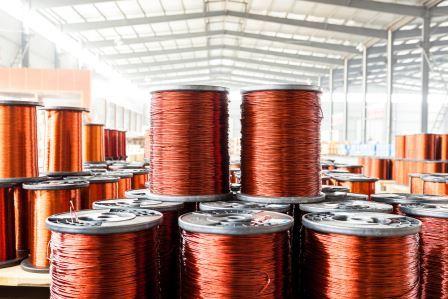Amid slow industrial growth, there is widespread optimism about economic stimulus measures from China that could boost demand for base metals, which could support prices later.
There are rumours that the US and China are close to an agreement on the trade deal, even as US officials say that they are “not satisfying as yet” on the current developments.
Anyhow, the high level meeting between the two countries are going on, and an announcement is expected in the next four to six weeks.
As per US officials, China has to address longstanding concerns like subsidies to industries, and transferring of technology and intellectual property rights. Reportedly, the trade deal discussions have been held in the aforesaid areas and on non-tariff measures, services, agriculture and trade balance as well.
US and China started the trade battle in July 2018 and it has roiled the global supply chain, which has darkened world economic outlook. The two of the world’s biggest economics are the largest trade partners too, but trade volumes have dramatically declined since imposing tariffs on each other. Waning exports to US adversely hit the Chinese manufacturing sector and their economy broadly. As per latest data, Chinese industrial firms posted their worst slump in profits since late 2011.
The trade battle worries had a cascading impact on global economy as well. The IMF recently cut the global growth forecast by 20 basis points to 3.3 percent, from its January forecast of 3.5 percent. This is the lowest expansion since January 2016. The agency also hinted that the growth rate would ease further due to tariff tensions and the UK’s potentially disorderly exit from European Union.
Bleaker global economic outlook pushed up the sentiments of safe haven assets like bullion. Despite a recent slight correction, gold prices have been on a positive note in key London market since last October. Gold’s demand historically has been positively correlated to economic growth.
Expectations of delay in hiking of US interest rates, which eased down dollar’s appeal also supported the sentiments. Performance of silver was also nor different.
Base metals largely fluctuated during this period primarily due to demand tensions from the world’s top consumer China. Copper traded broadly range bound. A sharp selloff was seen in the second half of previous year, but prices started gaining from January this year. This was due to the optimism that US and China are close to resolving the trade dispute which may scale up demand. Supply disruptions from top producers too assisted the short-term fundamentals.
Nickel is the top non-ferrous base metals with loss largely due the trade war tensions. The commodity largely used in making of stainless steel has dropped more than 30 percent due to worries over demand from the top consumer China. Likewise, is the performance of lead and aluminium. Prices shed to multi-month low due to demand worries. However, though Zinc prices lost more than 25 percent in the last year, prices recovered swiftly gaining about 16 percent so far this year.
Trade war tensions had little impact on energy commodities. Crude oil traded broadly choppy due to demand-supply factors. Likewise is the performance of natural gas.
On agriculture commodity front, an initial strong selloff was seen in soy complex, but prices gradually recovered later. Similar moves were witnessed in cotton complex and other edible oil commodities.
However, amid slow industrial growth, there is widespread optimism about economic stimulus measures from China that could boost demand for base metals, which could support prices later.
First Published in moneycontrol.










